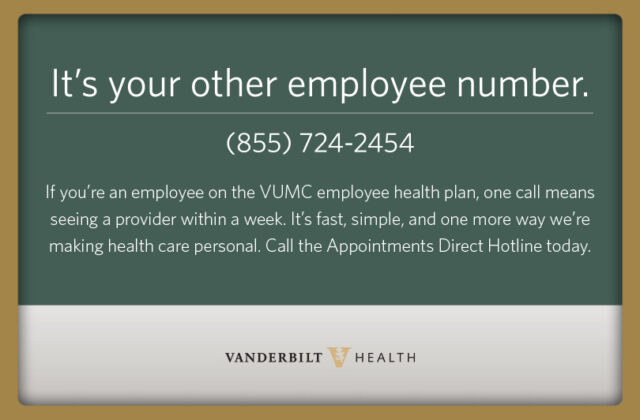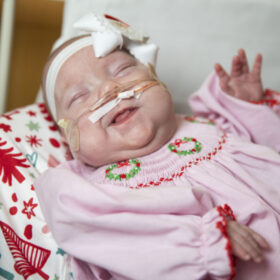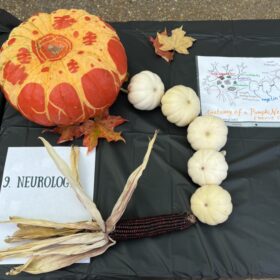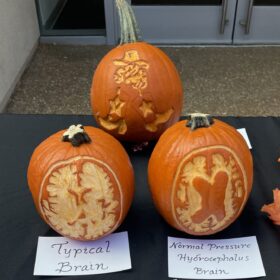I was a volunteer shower-taker for Emergency Preparedness. I came away impressed — and very clean.
A drill tests how well the Medical Center would be able to respond during an actual disaster, and serves as response training for VUMC personnel.
November 1, 2021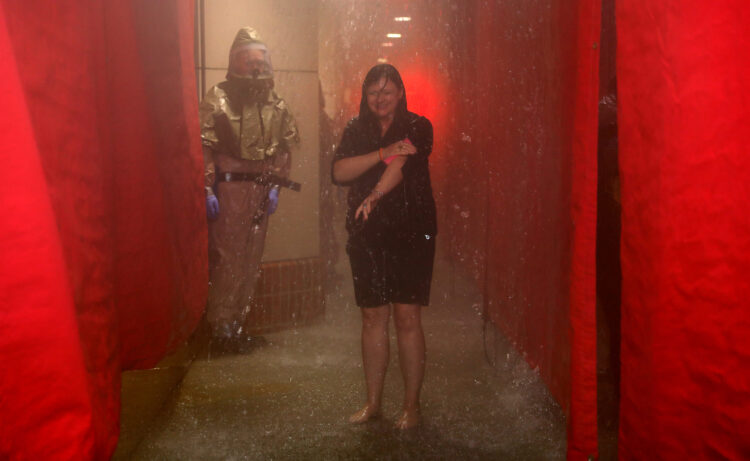
Jill Clendening, a writer and reporter in the office of News and Communications, volunteered at VUMC’s Oct. 28 Decontamination Training Exercise.
All photos by Erin O. Smith
On a hot summer day, after working in my garden for a couple of hours, coming in to a cool shower feels great.
On a cold winter day, nothing feels better than stepping into a hot shower to warm up and relax.
This was different.
Because I had volunteered to be part of Vanderbilt University Medical Center’s annual Decontamination Shower Training Exercise, I was on the sidewalk outside The Vanderbilt Clinic, fully clothed, under a cascade of water that was barreling down on me at the rate of 10 gallons per minute.
For the exercise, I played the role an individual who had been exposed to an unknown chemical during an event at a Nashville sports arena. Thankfully, the exposure was imaginary, and this was just a drill.
But saying this was “just” a drill doesn’t do the occasion justice, as each of the 80 individuals who took part – from Emergency Preparedness staffers Tim Hunter and Alex Mindel, to the Facilities Management staff who rapidly set up the outdoor space, to those suited in full hazardous-materials (hazmat) protective gear to aid with decontamination, to my fellow-volunteer-shower-takers – took their roles seriously.
In a real emergency, the decontamination process would both clean the hazardous material off an exposed individual, as well as limit the spread of the material to other individuals, equipment and treatment spaces.
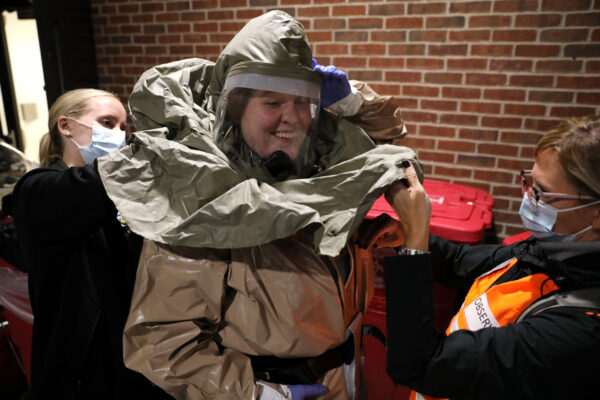
More than 80 people participated in the Decontamination Shower Training Exercise, including emergency personnel practicing and training in the use of protective equipment during a disaster.
The VUMC Department of Emergency Preparedness plans and implements hospital disaster drills or exercises, and while The Joint Commission requires a minimum of two each year, VUMC typically conducts 13-18 drills annually, said David Meyer, RN, Emergency Preparedness senior program manager. Many are “tabletop” exercises, meaning rather than having a lot of physical movement of bodies and equipment, an emergency scenario is methodically run through by key stakeholders around a conference table.
The drills test how well VUMC would be able to respond during an actual disaster, as well as the Medical Center’s ability to coordinate an emergency response with state and local agencies and other area hospitals. The drills also serve as invaluable disaster response training for VUMC personnel.
For the decontamination exercise, the shower area included 10 shower heads mounted in the ceiling above the sidewalk outside The Vanderbilt Clinic entrance. Ordinarily, the shower heads are tucked behind ceiling panels, and you’d never know they existed.
Giant, red tarpaulins were dropped down from the ceiling and attached to the floor to create private shower corridors, with men on one side, women on the other. Patients who could walk – or ambulatory patients – entered the showers from the right side, stripping “contaminated” outer clothing and grabbing soapy sponges from buckets to begin scrubbing beneath the brisk spray.
Patients not able to walk – in this instance played by an agreeable rubber mannequin on a stretcher – were placed on a backboard and sent slowly through the shower on a conveyor, closely attended by individuals in protective garb. The ambulatory side can manage about 100 people an hour; the non-ambulatory side can manage about six an hour.
VUMC’s decontamination drill usually occurs in warmer months, which isn’t so comfortable for those in full gear but wonderful for those getting doused. Thankfully, the water on this mild autumn afternoon was a lovely 110 degrees Fahrenheit and felt like a summer waterfall.
Some “contaminated” volunteers secretly carried a small piece of minutely radioactive metal – with just enough radioactivity to be detected by a Geiger counter scan – as they entered the shower space. They had also pre-slathered on Glo Germ, a material detectable only under blue light, so they could be examined for complete decontamination at their shower’s end. If they still “glowed,” back into the showers for another scrubbing they went.
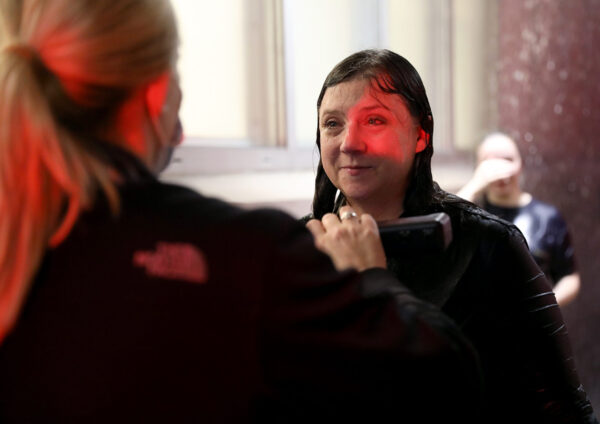
Clendening exits the decontamination shower and is scanned to determine if she is still “contaminated” as part of the training exercise.
The water’s deluge made hearing next to impossible, so the hazmat-garbed volunteers waved showering individuals through, assisting as needed. A large traffic signal — somewhat disturbingly similar to those at the exit of an automatic car wash — provided a visual signal to indicate when each person’s water rendezvous was complete.
Well-soaked volunteers were then examined in a triage area for redirection to the adult emergency department, the pediatric emergency department, or to an observation area.
It was at this point that we got to towel off, wrap up in a blanket, and debrief with the emergency preparedness staff by sharing our observations on the exercise.
How was it really? At the five-minute mark of the pummeling shower, I was more than ready to exit. The experience was a sensory overload, with roaring water, bright lights, red tarps and unrecognizable people inspecting from behind extraterrestrial-like suits and masks. But I can also see how those suited folks could be a huge comfort to those who had just experienced a frightening emergency or who might have sensory processing issues.
It was a lot. But it was also just enough.
At the end of the exercise, I was grateful and proud to be part of an institution that is incredibly committed to keeping both its patients and employees protected in the event of an emergency.
As a bonus, I was also likely cleaner than I’ve been in my entire life.
More images from the drill:
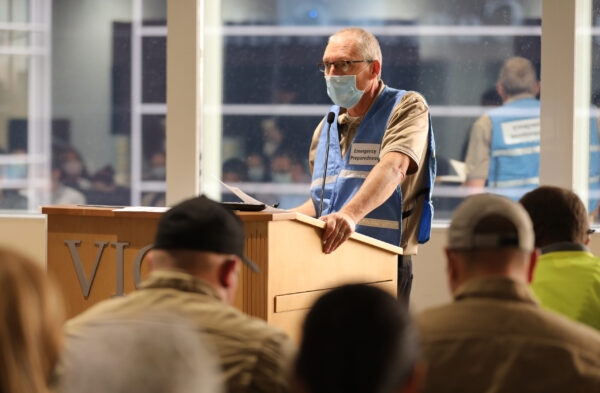
David Meyer, RN, senior program manager of Emergency Preparedness and Response, briefs participants before the drill.
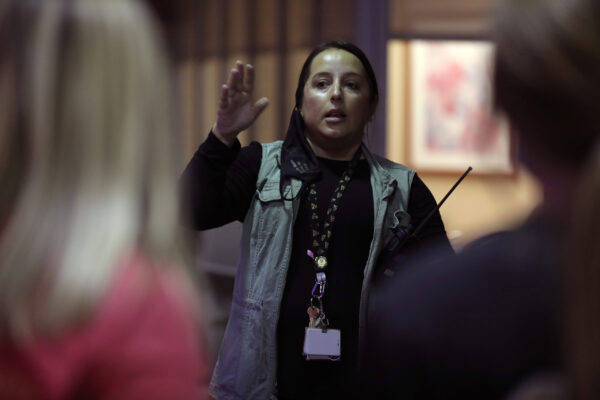
Alex Mindel, senior program manager in Emergency Preparedness, speaks to volunteers before the decontamination training exercise.
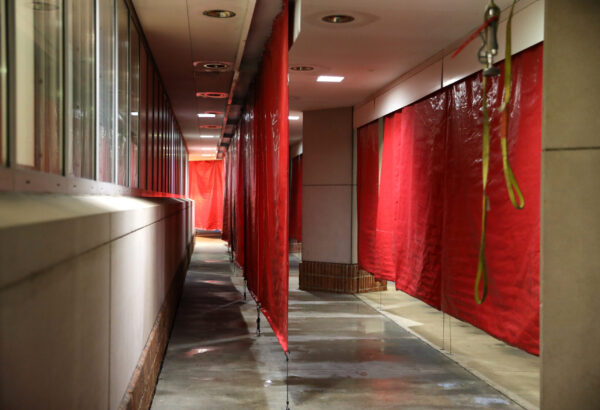
During a clinic day, this sidewalk in from of The Vanderbilt Clinic is bustling with patients and valet parking staff; on this October evening the deployed shower curtains are in place for the Decontamination Shower Training Exercise.
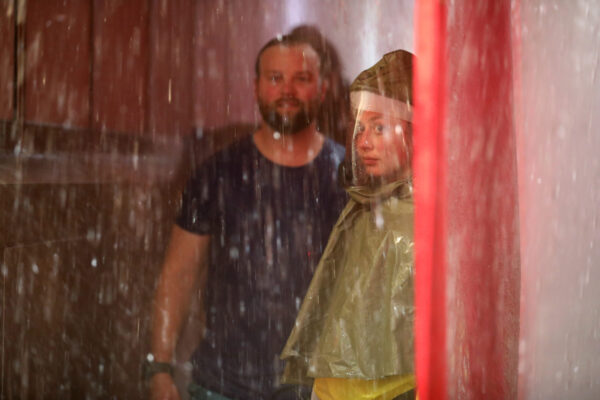
When the drill was underway, both volunteer shower-takers and those training in protective clothing were under the 10-gallon-per-minute deluge.
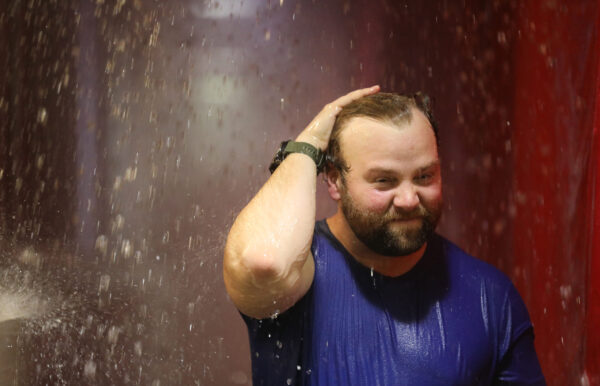
Volunteer Michael Pogge makes his way through the showers. Ten volunteers passed through the showers during the drill, providing training opportunities that could save lives in a real emergency.
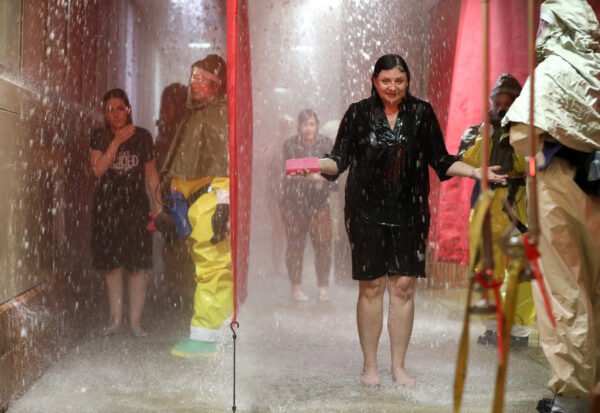
Jill Clendening nearing the end of the shower exercise and in no way having second thoughts about volunteering for this assignment.
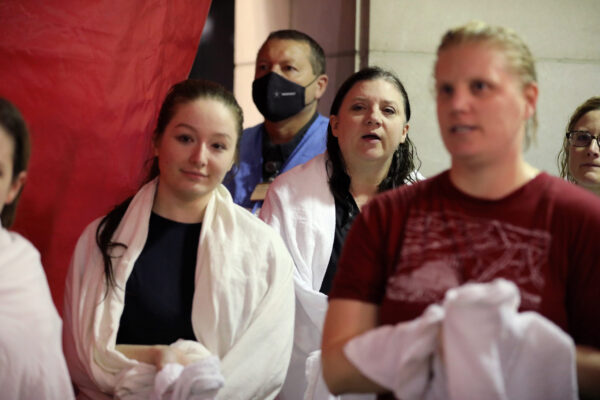
Clendening and other volunteers got a chance to dry off and attend a debriefing at the end of the Emergency Preparedness event.
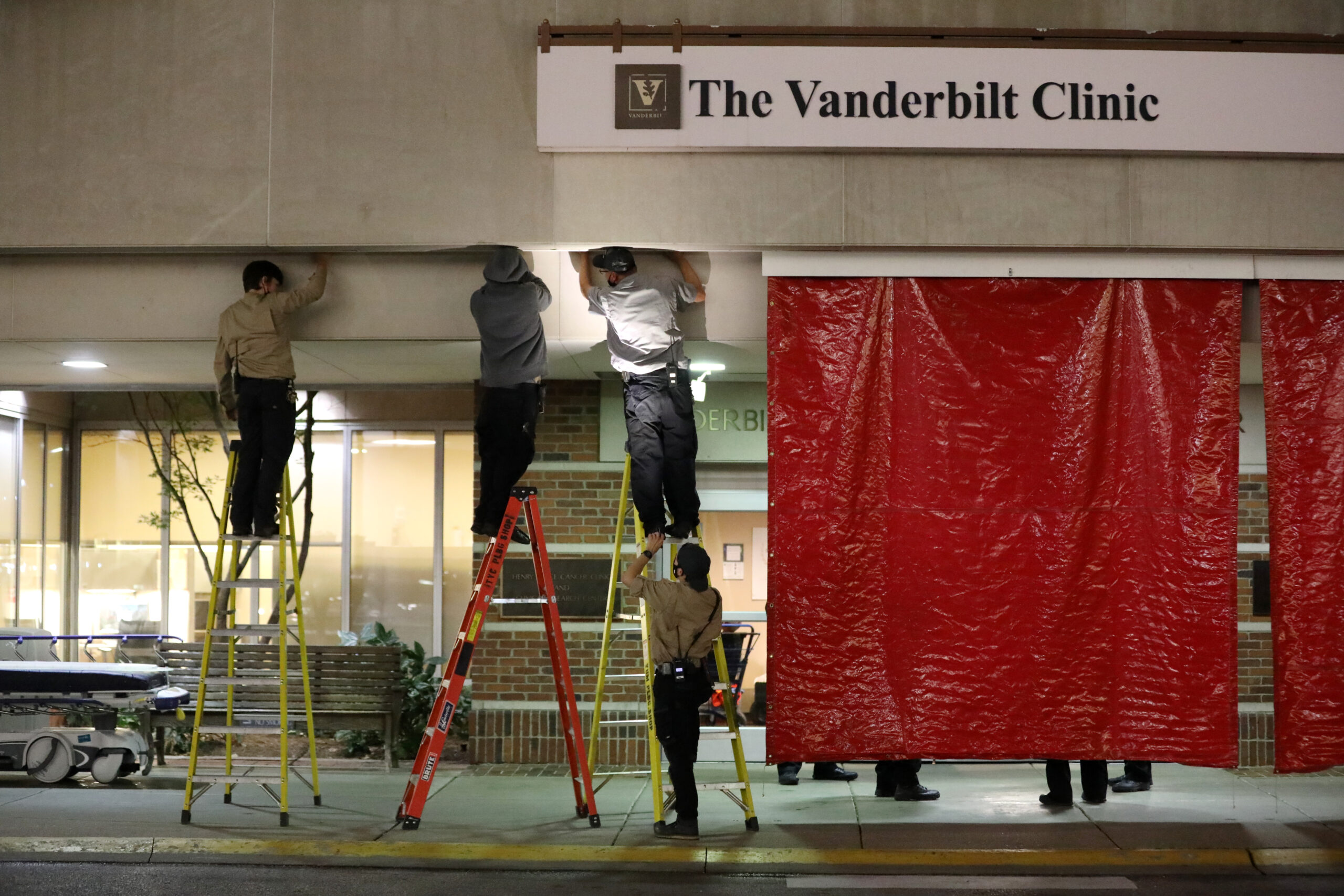
At the end of the drill, Facilities Management employees put the showers away and raise the curtains — in hopes they won’t be deployed until the next drill.
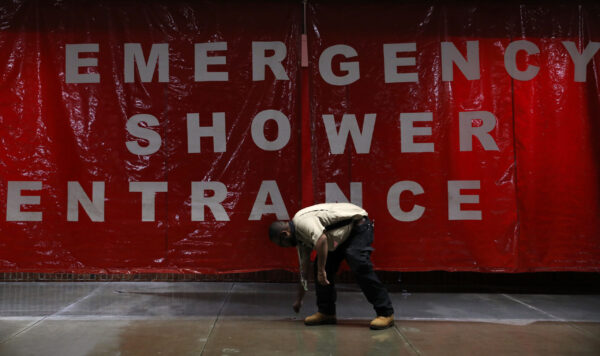
After the drill, Jason Thicklin from Facilities Management was part of the crew working to put the curtains and showers away.





